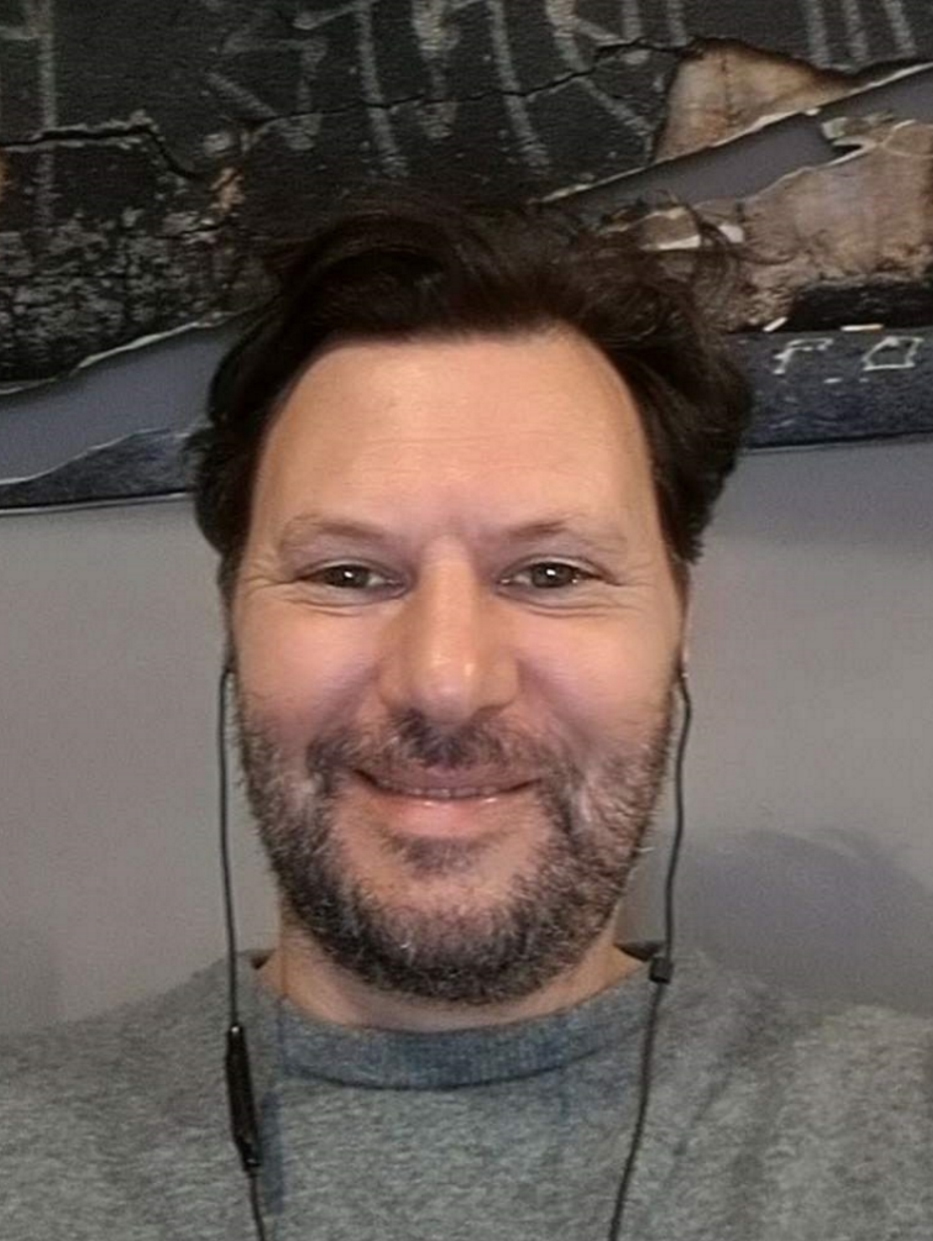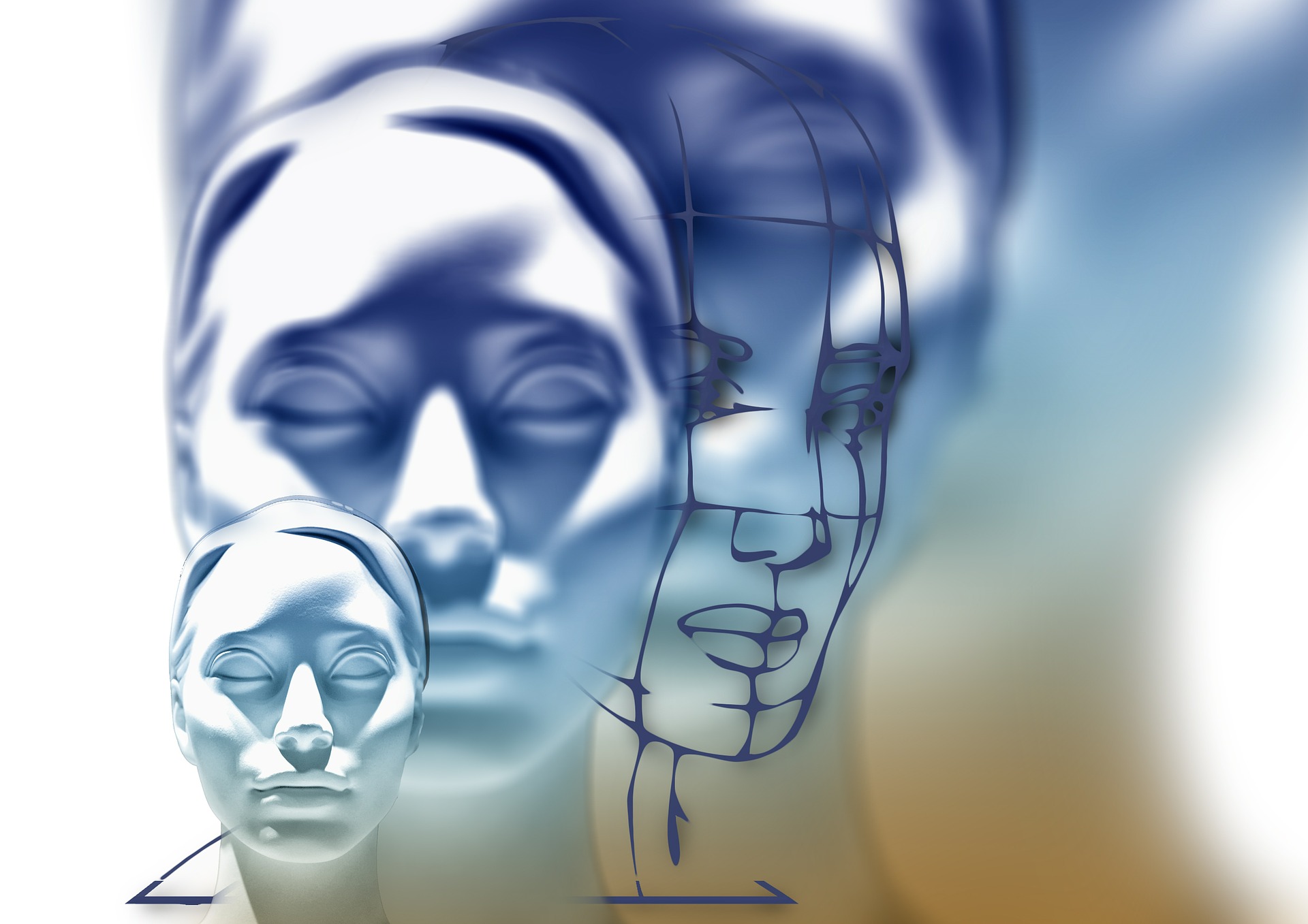
However, as the works of Sigmund Freud and Carl Jung illustrate, the subconscious/unconscious perform two different functions. To understand the source of your thoughts, actions and emotions, it is pertinent to distinguish the functional differences.
Consequently, Master Mind Content feels a decisive explanation is required. In doing so, it is easier to identify where a thought is originating from, and more importantly, which voice to listen to.
To keep things simple, Master Mind Content uses the terms below:
Self-ego axis = conscious awareness; the centre of consciousness that makes your decisions
Subconscious programs = habitual patterns of behaviour; sometimes we use the term ‘habitual mind’ when referring to attachments the ego believes you need to get you through the day. These are subconscious programs caused by archetypal projections that have taken “possession” of the ego.
Superconscious = parts of your personality that need to be integrated into conscious awareness.
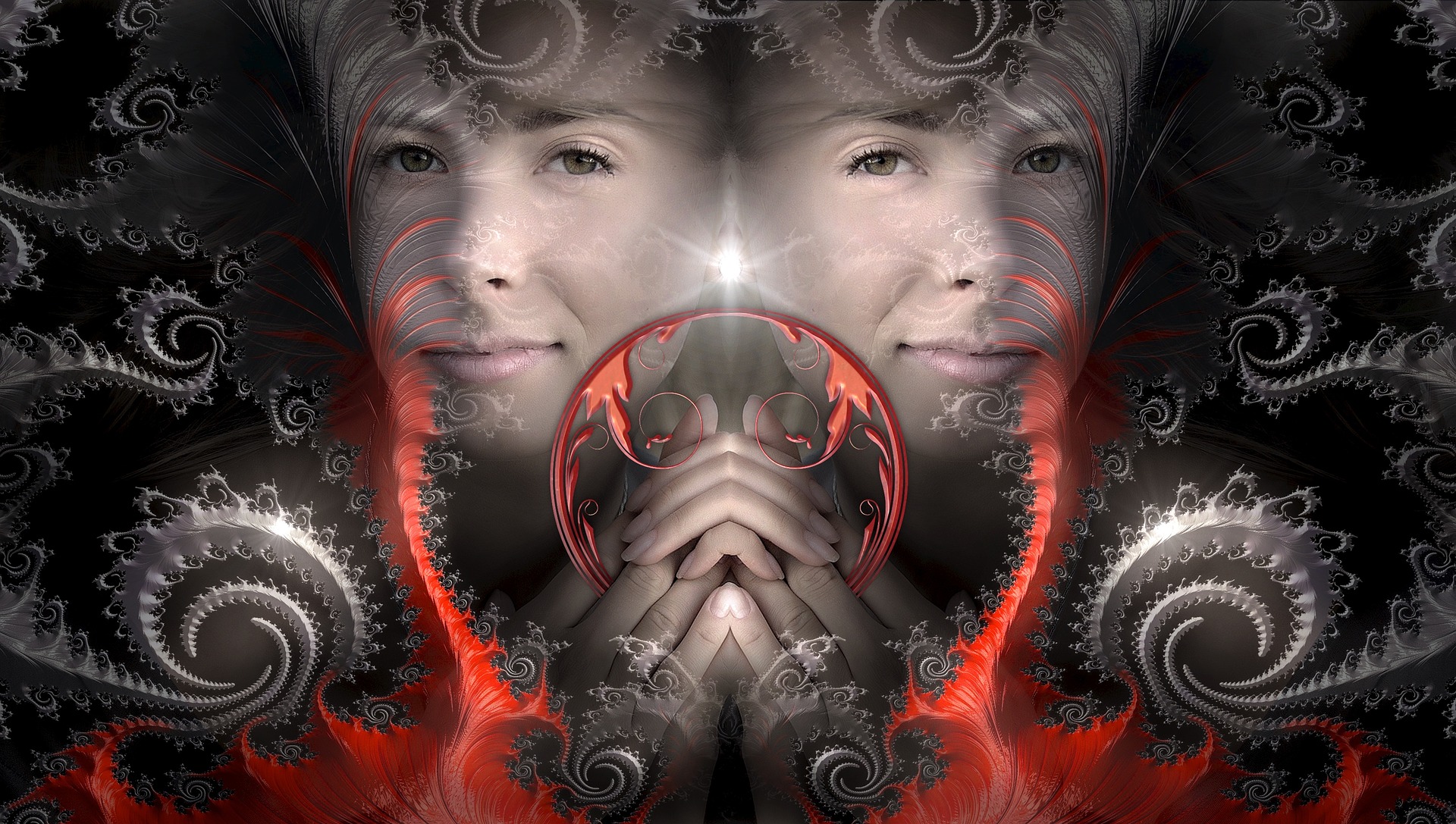
The Self-ego axis is the seat of conscious awareness. It is responsible for your decision-making, surviving and thriving. However, the decisions you make are determined by the aspect of your personality that has the most power; the ego or the Self. [1]
The ego wants you to survive. The Self wants you to thrive.
Subconscious programs are memories the central nervous system stores in your cells. The stored information related to past experiences that your conscious mind deemed would not disrupt your emotional well-being. Subconscious programs are created in one of three ways.
1. You develop a coping mechanism to compensate for an emotional need. Coping mechanisms can then become an addiction, usually a destructive habit, or an oddity such as a quirky character trait
2. An archetypal energy abducts the conscious mind and you experience a moment of madness (or you can become gradually psychotic)
3. An archetypal energy emerges as a complex which develops into a full-blown neurosis; depression, anxiety, OCD, PTSD
The superconscious aligns with Carl Jung’s collective unconscious together with archetypal energies the ego has NOT YET identified with. These opposing energies of the archetypes can, however, appear in the conscious personality. Jung called this the Shadow.
We have chosen to call it the superconscious because it contains the missing aspects of your True Nature that give you the superpowers to excel at life and experience the world from a love-based centre.
“The collective unconscious is the source of our spiritual and psychological nourishment, the material of which our inner lives are made.” [2]
~ Robert Johnson, Ecstasy
It’s important to note that the conscious mind, subconscious and superconscious are intricately linked. The goal of the Essential Self-Development program is to bring the superconscious to the attention of your conscious awareness.
This involves identifying the archetypal qualities that cause problems in your life and integrating the missing qualities into your personality.
In other words, your goal is to upgrade subconscious programs with your innate superpowers.
Let’s take a look at how consciousness becomes manifest, repressed and suppressed.
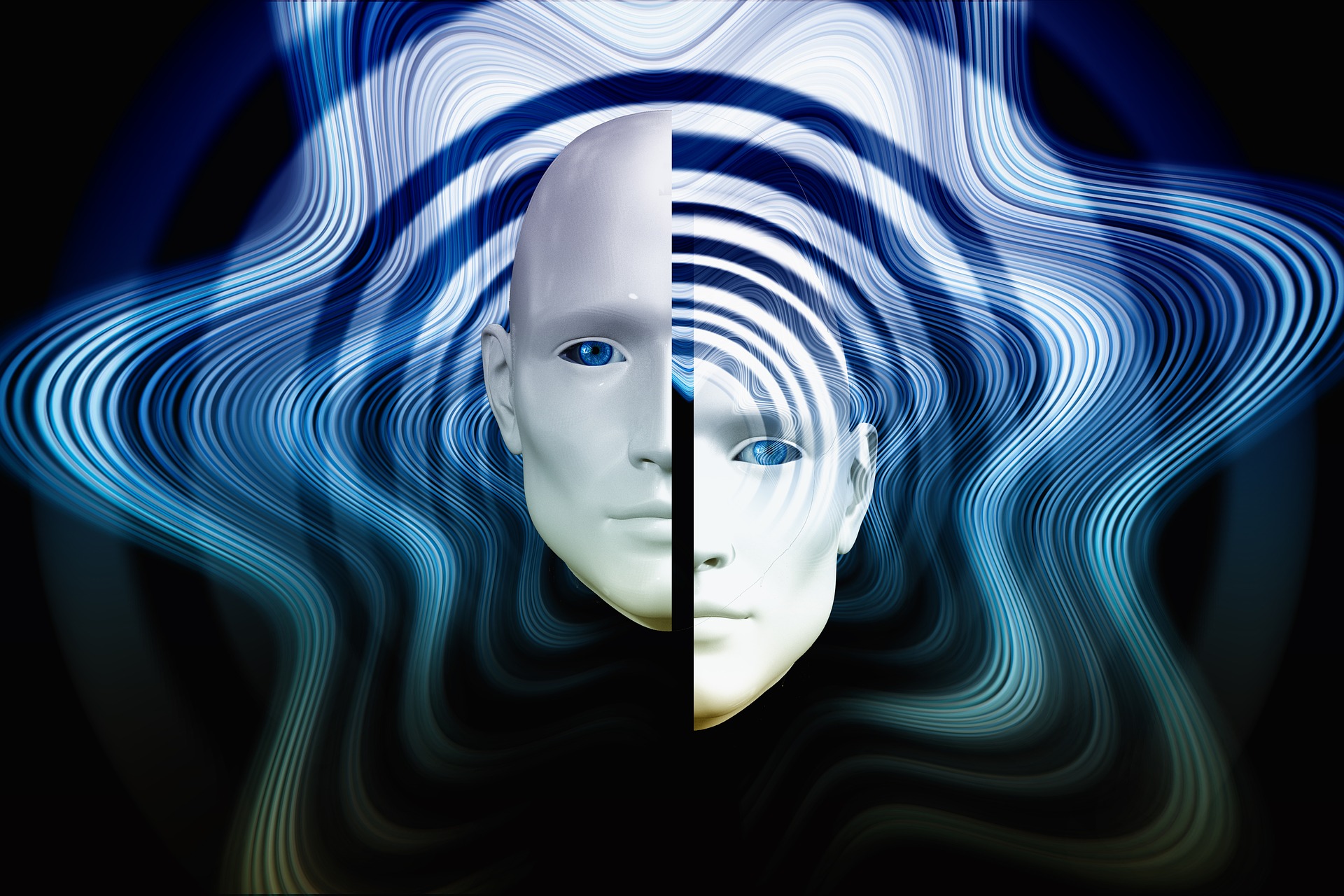
It was thought for many decades that conscious awareness is stored in the brain and that behaviours are determined by genes. The science of the day has shown that both assumptions are incorrect. (Read more in the articles: How The Nervous System Works and The Battle Between Intellect and Instinct.
Neurobiology shows us that emotions are created by the nervous system [3] which appears to coincide with psychologies widely used term, subconscious programs. It may be the case that habitual thoughts are subconscious programs [4].
Other thoughts, however, originate from outside the body, in what we are calling the superconscious. The superconscious aligns with Jung’s collective unconscious which is also called the ‘World of the Archetypes’ in Jungian theory.
Modern researchers in various disciplines of science have given this field of energy names such as morphic resonance [5] and the Holotropic mind [6]. This new way of thinking implies the brain — or conscious mind — is simply aware of thoughts and emotions as they emerge into conscious awareness.
Jung recognised this in the early 20th Century.
“Without a doubt, consciousness originally arises out of the unconscious (subconscious). This is something we forget too often, and therefore we are always attempting to identify the psyche with consciousness, or at least attempting to represent the unconscious as a derivative, or an effect of the conscious.” (Brackets are mind)
~ Carl Jung, Commentary on The Secret of the Golden Flower (1929)
What a crackpot!
I imagine this would have been the general response from the institutionalised thinkers in Jung’s day. Around a century later, scientific research is proving the Swiss psychoanalyst was correct and his detractors were wrong.
Yes, the institutions that dictate belief systems were wrong and have hindered progress in the field of consciousness for a century.
This brings me to the starting point of this content. Why is the terminology used in psychological literature and across “official” websites so confusing?
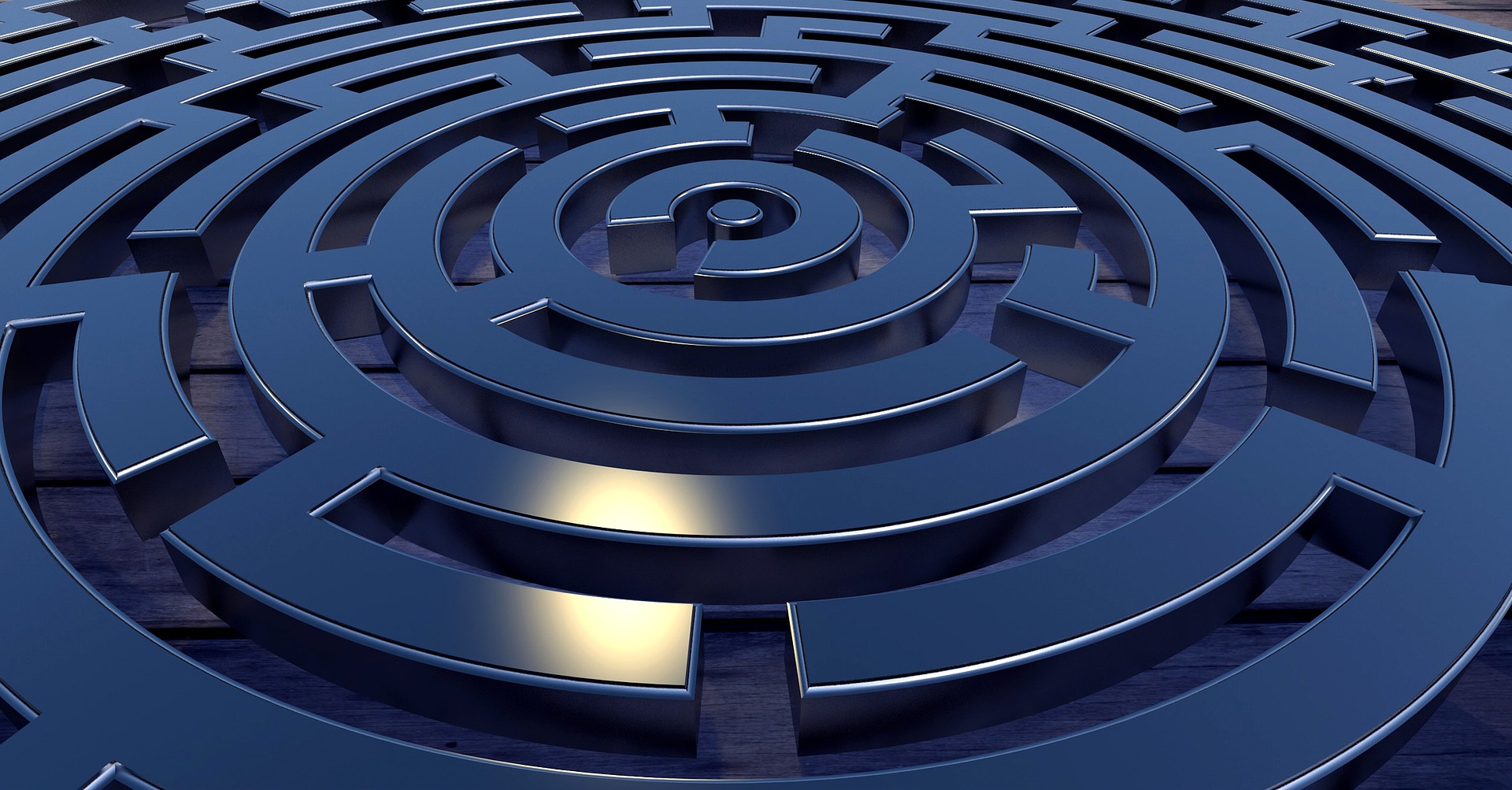
But if you’re not bothered about “conspiracy theories”, skip to the next section and go to Subconscious Programs v Superconscious: Why Are They Different
Readers who take an active interest in psychology will no doubt be familiar with the term ‘subconscious’. But you will also have read the term ‘unconscious’.
What is the difference between the subconscious and the unconscious? The term is used interchangeably to refer to the same thing — content that is outside conscious awareness.
Both terms are still widely used by laypeople. However, both terms have been ditched by professional psychologists because of the confusion it was causing.
Mental health professionals now use the term ‘non-conscious’. But, in my opinion, the definition of this term doesn’t explain how the mind works either.
Personally, I feel that there should be more clarity that distinguishes between the two functions of the mind. And there are two functions so you can’t use a uniform term to satisfy both functions.
That’s how things get confused.
First of all. Let’s take a look at how mainstream psychology defines the subconscious:
“SUBCONSCIOUS: “Subconscious contains the suppressed ideas and thoughts.” (Source: Psychology Dictionary)
Note how psychology professionals note the subconscious “lies under the conscious level and above the unconscious level.” So psychology professionals acknowledge consciousness has layers. This is important when it comes to understanding your thoughts, actions and emotions.
Also, note how the writer associates suppressed consciousness with the subconscious. Suppression is a conscious act. Repression on the other hand is split-off content you are completely unaware of. Again, this is an important distinction to make.
The Collins dictionary — giving the definition to non-professionals — says that the subconscious influences your behaviour even though you’re not aware of it.
This is partly true. The subconscious does influence your behaviour and you may not realise you are behaving in a particular way. But sometimes you know precisely why you’re doing something (logical thinking, inner knowing). The occasions that you are unaware of are archetypal energies trying to draw unconscious content into conscious awareness.
The APA are non-committal about the function of the subconscious but says it is open to autosuggestion and hypnosis. So on the one hand, they acknowledge it serves a function and can be influenced by our environment, but, on the other hand, the term has been scrapped.
Meanwhile, the definition of the Unconscious is:
The Psychology Dictionary indicates that the unconscious contains content you are not consciously aware of and which is not easily retrievable like the subconscious memories we access every day.
They also imply that unconscious content influences your behaviour via a sequence of buried or repressed memories, emotional conflicts and instinctive desires we are not aware of.
The unconscious, therefore, serves a different function from the subconscious in that it isn’t easily accessible and contains repressed content rather than suppressed content. They are two different sources of energy which we can learn from, namely the Self-ego axis.
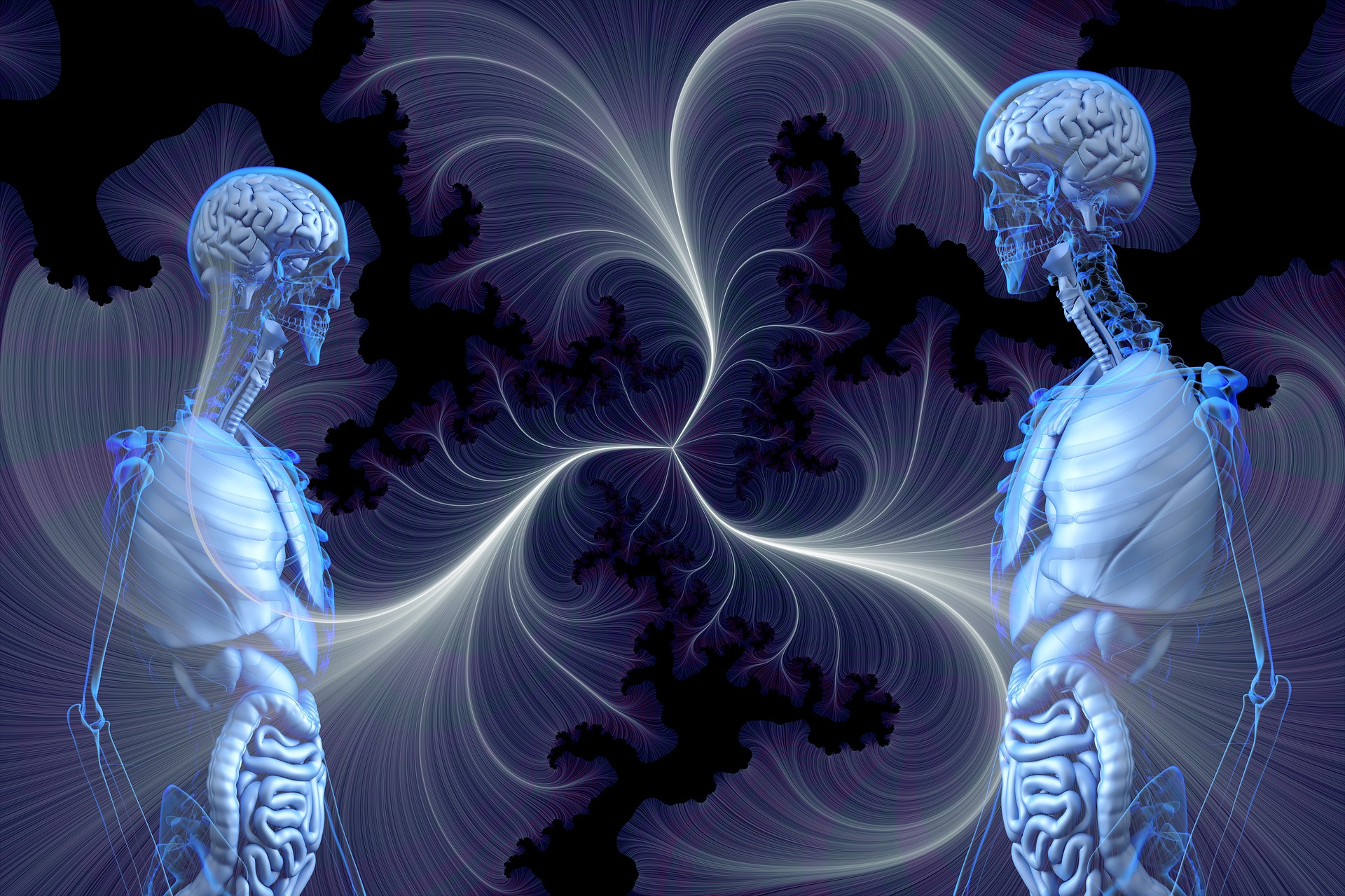
Repressed content is not available to the conscious mind because the information has never been programmed into the central nervous system (the subconscious). Suppressed content is available to the conscious mind but is rejected by the ego if the instinct is not appropriate at that moment.
In my opinion, the subconscious should be recognised individually as separate from the unconscious.
The APA also note that the unconscious is where we store memories, emotional conflicts, wishes and repressed impulses that influence behaviour. However, the institution also explains the term unconscious has been replaced with non-conscious:
1. describing that which is not explicitly in the contents of conscious experience.
2. describing any cognitive process or event that is not available to introspection or report. (Source: American Psychological Association)
Point 1 basically describes the unconscious — content that is outside of conscious awareness. This means either the content has been repressed or you have not been in a situation to express an aspect of consciousness.
Point 2 basically says the same thing as point 1 — unconscious content that is not accessible for the conscious mind to reflect on. That happens when the content has not been part of a conscious experience.
I can see how the term non-conscious relates to the unconscious mind, but it completely eliminates memory retrieval that is accessible to conscious awareness.
For the APA, the subconscious no longer exists but is open to autosuggestion but not memory.
Weird.
We become consciously aware of memories when they are entering into conscious thought. Or as the APA says: “an organism’s awareness of something either internal or external to itself.”
So the “official” term non-conscious is the same as the superconscious we use at Master Mind Content. However, as you will see, the superconscious does influence your behaviour and it does create memories that become stored in your subconscious as a program.
The subconscious can be programmed by autosuggestion and hypnosis from the external world. As Joseph Goebbels said: “If you tell a lie big enough and keep repeating it, people will eventually come to believe it.”
However, you should be upgrading your subconscious programs from internal content. That’s where the treasure is buried. Your True Nature in its fullness.
Knowing the difference between subconscious programs and the superconscious will help you to overcome habits and make faster progress in your self-healing and self-development endeavours.
In a nutshell:
Subconscious programs are the habits that keep you trapped in cyclical patterns of behaviour. This is the information programmed in the central nervous system which the ego identifies with and responds to.
They are concrete beliefs (which can often be limiting beliefs), attitudes, character traits, habitual thoughts, emotions and attachments. Subconscious programs pilot most of your decision-making and thus have the biggest influence on your experience of life.
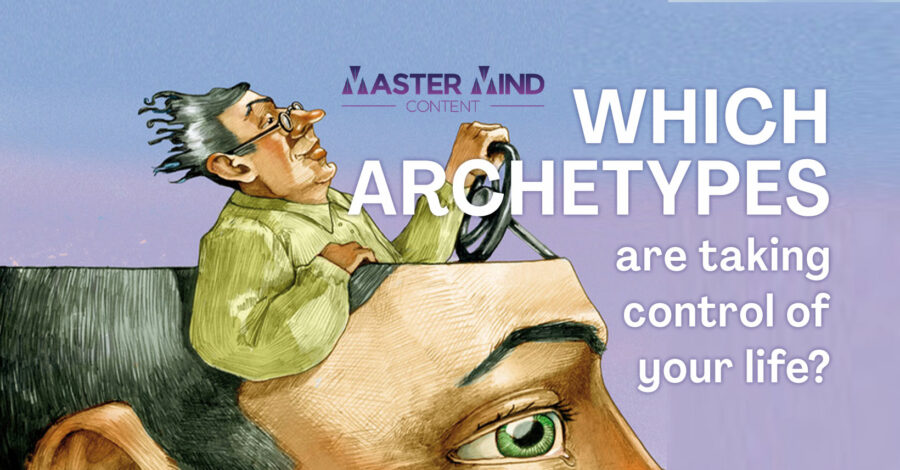
Whilst some subconscious programs are critical for our survival, they can also make us one-sided. Ultimately, subconscious programs cause an imbalance in the psyche.
As a consequence of one-sidedness, the content stored in your subconscious programs generates the same energies which ultimately manifest as the same behaviours, thoughts, emotions and experiences.
When the personality is one-sided, “every impulse towards adaptation to the outer world tends to be repressed and to sink into the unconscious.” [7] The individual must not withdraw from the world into the unconscious but find a way to adapt to his environment.
The superconscious attempts to find an adaptable state of being which will bring about order and harmony between the Self and the ego. Unlived or ignored archetypes project themselves onto the conscious personality and take possession of the ego.
Archetypal energies exist in both the subconscious and the superconscious. This is because energy has opposing forces. When consciousness becomes split off, one aspect of the archetype is lived and the other is unlived. This is why in mythology the dead is associated with the Underworld.
“Now it is an axiom of psychology that when a part of the psyche is split off from consciousness it is only apparently inactivated; in actual fact it brings about a possession of the personality, with the result that the individual’s aims are falsified in the interests of the split-off part.” [8]
~ Carl Jung: CW9 Part 1, The Archetypes and the Collective Unconscious
Archetypal energies in the subconscious are aspects of your personality that have been expressed. This side of the archetype is identified by the ego and is accepted as part of the personality.
The problem is that the ego doesn’t know good from bad. It only knows what protects your emotional survival in the external world. For example, abused children that only have bad experiences, develop the worst side of human nature.
This side of the personality is integrated into the conscious mind and the ignored aspect is pushed into the superconscious. However, the archetypal energies in the superconscious still emerge into conscious awareness.

When the ego is strong, you will be able to suppress archetypal energies and deny them expression. However, when the ego is weak (as it is in children), the archetypal energy emerges as an illusion; a destructive behaviour or misleading attitude that will eventually cause you to trip up and realise you are wrong.
But only if you are able to admit to your shortcomings. If you choose to ignore them, you are more prone to one-sidedness.
“Conscious capacity for one-sidedness is a sign of the highest culture. But involuntary one-sidedness i.e. inability to be anything but one-sided, is a sign of barbarism…For the Barbarian, this tendency to fall victim to one-sidedness in one way or another, thereby losing sight of his whole personality, is a great and constant danger.” [9]
~ Carl Jung, CW6, Psychological Types
If you enjoyed the experience prompted by the superconscious, you’re more likely to do it again. The more often you repeat something, the split-off aspect of consciousness takes possession of the ego and leans towards destructive behaviours and unhealthy habits.
This is why you have some subconscious programs that help you to thrive and grow whilst others help you to survive. Subconscious programs that create problems in your life are designed for emotional survival and keep you rooted in a victim state.
But if you look at your survival mechanisms and recognise why they are there you will find the remedy in the opposing energy. Integrate the archetypal quality into the conscious mind and you are equipped to thrive.
It’s time to break free.
To understand which problems the superconscious is causing, you need to be able observe archetypal energies. They show up in patterns of behaviour, emotions, attitudes, beliefs, personality traits, complexes and the experiences you have in life.
I’ve featured the Self-ego axis in an in-depth article. If you haven’t read it already, or if you don’t feel as though you understand this concept, revisit the content here — Self-ego axis.
But to recap, the conscious mind has two attitudes; introversion and extroversion.

The Self is the introverted aspect of consciousness. It has access to the superconscious and helps to bring archetypal energies into conscious awareness.
To excel in life, you need to be Self-directed but also develop the ego with a sufficient number of archetypal qualities so that you can manage yourself appropriately in the external world. The more archetypal energies you integrate into the conscious personality, the more you develop human superpowers; heightened intuition/psychic tendencies/inner knowing.
“For certain reasons mentioned there I call this centre the “self,” which should be understood as the totality of the psyche. The self is not only the centre, but also the whole circumference which embraces both conscious and unconscious; it is the centre of this totality, just as the ego is the centre of consciousness.” [10]
~ Carl Jung, CW 12, Psychology and Alchemy
The ego is the extroverted aspect of consciousness. If your attitude towards life is directed outwards and you look for comfort in your external environment, the ego becomes overinflated.
If you become too one-sided, you become disconnected from the Self and encounter more conflicts in your life. You need to look inwards to integrate the missing aspects of your personality and develop the ego.
Thought-Provoking Quote
“It is a fact that consciousness heightened by a necessary one-sidedness gets so far out of touch with the archetypes that a breakdown follows. Long before the actual catastrophe, the signs of error announce themselves as absence of instinct, nervousness, disorientation, and entanglement in impossible situations and problems.” [11]
~ Carl Jung, Commentary on The Secret of the Golden Flower (1929)
Any type of fixation in the material world is a sign of an overinflated ego. Excessive behaviours, beliefs or attitudes towards one thing develop a one-sided nature that is detrimental to the whole personality.
To compensate, the superconscious creates a conflict. You will find an impression of an archetype in every challenge you face in life, in attachments, an oddity, the voice in your head that says “I know I shouldn’t do this” and the ego says “but” and does it anyway.
The Self can also take possession of the ego in an instant and send you into a moment of madness. These are the times when you act ‘out of character’ and say, ‘I don’t know what I was thinking’ or ‘I don’t know what came over me.’

If you have a complex, neurotic behaviour or encounter situations that are problematic — arguments, conflicts, frustration, restlessness — you need to observe these traits and determine which archetypal quality needs integrating into conscious awareness in order to develop the ego.
By understanding the purpose of an archetypal quality emerging from the superconscious, you free yourself from the life-impulses, erratic behaviours, uncontrollable emotions and periods of despair or depression etc.
Through self-observation, you will be able to determine that your behaviour, personality traits, impulses, attachments, attitudes and emotions begin to reflect repressed consciousness.
Thought-Provoking Quote
“One of the most important forms is the phenomenon of possession: some content, an idea or a part of the personality, obtains mastery of the individual for one reason or another. The contents which thus take possession appear as peculiar convictions, idiosyncrasies, stubborn plans, and so forth. As a rule, they are not open to correction. One has to be an especially good friend of the possessed person and willing to put up with almost anything if one is to attempt to deal with such a condition. I am not prepared to lay down any hard and fast line of demarcation between possession and paranoia. Possession can be formulated as identity of the ego-personality with a complex.” [12]
~ Carl Jung, CW9 Part 1, The Archetypes and the Collective Unconscious
The attachments you developed to help fill the void left by fragmented consciousness may have started out as a coping mechanism but later became an addiction or a complex.
However, when you start looking inward and observe your thoughts, actions and behaviours, you will begin to notice a psychic phenomenon that appears to have a loose connection with your conscious personality. [13]
This is when you start to come into conscious contact with the Shadow together with the Anima (for men) or the Animus (for women).
Subconscious programs reflect your personal experiences. They are a record of your life, filed and coded into your cells. These “memories” surface as thoughts and feelings which influence your actions.
Subconscious programs are what Freud called the preconscious and Jung associated with the personal unconscious.
Thought-Provoking Quote
“That which is latent [not yet fully formed], and only unconscious in the descriptive and not in the dynamic sense, we call preconscious; the term unconscious we reserve for the dynamically unconscious repressed, so that we now have three terms, conscious, preconscious, and unconscious, which are no longer purely descriptive in sense.” [brackets are mine]
~ Sigmund Freud, The Ego and the Id [14]
Sitting just below the surface of the conscious mind, subconscious programs are easily retrieved. The information stored in these files creates the thoughts that appear in your mind, the way you feel, how you act and how you behave.
How you experience life is predominantly pre-determined by subconscious programs. You can also call this the habitual mind. A store of habits and biases. The information stored in your subconscious is the building blocks of your personality and how you experience life.
Like Freud, Jung noted that contents within the personal unconscious — although they drive behaviour — remain unconscious.
Thought-Provoking Quote
“We have to distinguish in the unconscious a layer which we may call the personal unconscious. The materials contained in this layer are of a personal nature in so far as they have the character partly of acquisitions derived from the individuals life and partly of psychological factors which could just as well be conscious. It can medically be understood that incompatible psychological elements are liable to repression and therefore become unconscious.” ~ Carl Jung, CW7 The Effects of The Unconscious Upon Consciousness [15]

The Superconscious, on the other hand, is a system which stores the entirety of human consciousness. The Superconscious is the equivalent of Jung’s collective unconscious and contains aspects of your personality that are not integrated into your personality because they have either been ignored, forgotten or unidentified.
We can therefore say that the personal unconscious contains archetypal energies that are split-off and cause an imbalance. An imbalance causes inflation, emotional disturbances, complexes, neuroses and disease.
Content stored within subconscious programs is, therefore, identifiable by observing patterns of thoughts, actions and behaviours. You will be able to recognise archetypal patterns of energy using the archetypes tool.
However, the other function of the “unconscious” — the Superconscious — contains aspects of your personality that you do not have any personal experience of.
These are human qualities, wisdom, beliefs, attitudes, thoughts, emotions and behaviours that are to be recognised, learned and integrated into conscious awareness.
Thought-Provoking Quote
“The collective unconscious is a part of the psyche which can be negatively distinguished from a personal unconscious by the fact that it does not, like the latter, owe its existence to personal experience and consequently is not a personal acquisition. While the personal unconscious is made up essentially of contents which have at one time been conscious but which have disappeared from consciousness through having been forgotten or repressed, the contents of the collective unconscious have never been in consciousness, and therefore have never been individually acquired, but owe their existence exclusively to heredity. Whereas the personal unconscious consists for the most part of complexes, the content of the collective unconscious is made up essentially of archetypes.”
~ Carl Jung: CW9 Part 1, The Archetypes and the Collective Unconscious [16]
For Jung’s concept to make more sense it is important to understand the nature of repression and how repression might be caused. You can read about that in more detail in the article, How The Nervous System Works, but for now I will briefly state that:
Repression is deemed to be the unconscious blocking of consciousness the brain deploys as a “defense mechanism” to avoid processing distressing thoughts. Repression causes energy to “split-off”. [17]
But taking this into account, we also have to determine how the brain does this. Psychobiology shows us that we absorb information from our environment that fires a neurone and a neurotransmitter.
New experiences trigger a process called neurogenesis. This creates a synapse which stores information. Biology shows us that memories are built on pre-existing synapses. [18]
Thought-Provoking Quote
“Forming memories doesn’t require new synapses (let alone new branches of neurons); it requires the strengthening of pre-existing synapses.”
~ Robert Sapolsky, Behave: The Biology of Humans at Our Best and Worst [19]
That means that a synapse is formed every time we take in new information. The more synapses built on top of each other gives that aspect of conscious awareness more strength. This is how habits are formed.
But how are synapses built?
They communicate with each other via neurotransmitters that are released in the pre-synaptic gap. Neurotransmitters are also called ‘chemical messengers’ because they carry information.
However, neurotransmitters are coded for by genes. [20] And there are multiple transcription factors in a cell, each constituting a particular set of information. [21]
If the information carried by a neurotransmitter waiting at the pre-synaptic gap is not compatible with existing information stored in the next synapse, the receptor cell denies access.
This function within the nervous system could well be the cause of repressed emotions that fall outside conscious awareness and remain in the Superconscious.
However, let’s not forget that at one time, the aspect of consciousness was split off and is stored somewhere in a cell. The other part of your personality that is not fully formed but is recognised by the conscious mind. A subconscious program.
This is why you have to re-member dismembered content. A subconscious program which is not fully formed can only become fully formed when the archetypal energies in the Superconscious are reunited with the split-off archetypal energies in the personal unconscious.
You can do this by listening to the Self. The Self has access to both the Superconscious, the subconscious and the conscious mind.
Subconscious programs can only be updated if you become consciously aware of split-off content in the Superconscious and changes your beliefs, perceptions, attitudes and actions.
This is why the Self — bringing in archetypal qualities — has to have autonomy over the ego. In doing so, you upgrade the subconscious programs that the ego responds to and thus there is balance and harmony within the self-ego axis.
Thought-Provoking Quote
“The archetype is, so to speak, an “eternal” presence, and the only question is whether it is perceived by the conscious mind or not.”
~ Carl Jung, CW 12, Psychology and Alchemy [22]
If you neglect to develop the ego to cope with your environment, you basically stunt your growth and encounter more conflict and challenges in your life.
The Superconscious stores valuable parts of your personality that you need to integrate in order to grow, succeed and live a happy and fulfilling life.
When you access missing parts of your Superconscious and integrate them into the conscious mind, you are better equipped to cope with your environment. You enjoy more success, feel better and experience more moments of contentment.
Thought-Provoking Quote
“Sometimes these hidden personalities are embarrassing or violent, and we are humiliated when they show themselves. At other times, we wake up to strengths and find qualities within ourselves that we never knew were there. We draw on hidden resources and do things we normally could not have done, say something more clear and intelligent than we’ve ever been able to say before, expressed wisdom we did not know we had, show a generosity or understanding of which we never knew we were capable. In each case there is a startled reaction: “I am a different person than I thought I was. I have qualities — both positive and negative — that I didn’t know we are part of my definition.”
~ Robert Johnson, Inner Work [23]
The goal of the Essential Self-Development Program is to identify the missing aspects of your personality and integrate them into your conscious personality. What you’re essentially doing is upgrading your subconscious programs.
To upgrade subconscious programs you have to integrate the missing aspects of your personality that reside in the Superconscious. This brings the fragmented aspects of your personality into union. Bringing all 12 archetypes into union helps you to achieve wholeness/health.
So how do you identify which aspects of your personality are missing?
There are several ways:
Symbols are the language in which the unconscious communicates to us. Archetypal patterns, complexes, instincts and neuroses are another way to understand this language by using the archetypes tool.
It’s also important to understand how the Self-ego axis works. This enables you to assess and determine, which thoughts, drives and motivations are subconscious programs the ego responds to and which thoughts are instinctive energies surfacing from the Superconscious.
In order to find balance, you must develop the whole personality. Thus you have the choice to incorporate the superconscious or allow archetypal energies to possess the ego with some kind of neurotic behaviour and chaotic experiences.
Thought-Provoking Quote
“But if we are able to see our own shadow and can bear knowing about it, then a small part of the problem has already been solved: we have at least bought up the personal unconscious. The shadow is a living part of the personality and therefore wants to live with it in some form. It cannot be argued our existence of rationalisation into harmlessness. This problem is exceedingly difficult, because it not only challenges the whole man, but reminds him at the same time of his helplessness and ineffectuality.”
~ Carl Jung, CW9 Part 1, The Archetypes and the Collective Unconscious [24]
If you ask why you are performing a certain action, or why you consistently repeat the same experiences (i.e self-sabotage), the superconscious gives you the answers — typically in symbols in dreams but also through events in your life or through a gradual process of self-realisation.
This is why understanding the esoteric meaning of symbols speeds up the self-development process.
The ultimate goal is to find a balance between masculine and feminine principles and dedicate an adequate amount of time to introspection and extraversion. This creates harmony between the Self-ego axis.
Balancing archetypal energies and developing the whole personality is far easier with the archetypes tool.
Thought-Provoking Quote
“The archetype—let us never forget this—is a psychic organ present in all of us. A bad explanation means a correspondingly bad attitude to this organ, which may thus be injured. But the ultimate sufferer is the bad interpreter himself. Hence the “explanation” should always be such that the functional significance of the archetype remains unimpaired, so that an adequate and meaningful connection between the conscious mind and the archetypes is assured. For the archetype is an element of our psychic structure and thus a vital and necessary component in our psychic economy.”
~ Carl Jung, CW9 Part 1, The Archetypes and the Collective Unconscious [25]
[1] Edward Edinger, Ego and Archetype (1992)
[2] Robert Johnson, Ecstasy, Kindle Loc 107
[5] Rupert Sheldrake, The Presence of the Past (1988)
[6] Stanislav Grof, The Holotropic Universe (1993)
[7] Carl Jung, CW6, Psychological Types, p.208 (1923)
[8] Carl Jung, CW9 Part 1, The Archetypes and the Collective Unconscious, 2nd ed, transl. R. F. C. Hull, para 277 (1968)
[9] Carl Jung, CW6, Psychological Types, p.256 (1923)
[10] Carl Jung, CW 12, Psychology and Alchemy, para 44, p.41 (1968)
[11] Carl Jung, Commentary on The Secret of the Golden Flower (1929)
[12] Carl Jung: CW9 Part 1, The Archetypes and the Collective Unconscious, 2nd ed, transl. R. F. C. Hull, para 220 (1968)
[13] Carl Jung, CW 12, Psychology and Alchemy, p.44, para 48 (1968)
[14] Sigmund Freud, The Ego and the Id, p.6 Kindle Loc 78 (1923)
[15] Carl Jung, CW7 The Effects of The Unconscious Upon Consciousness, p.135, para 218 (1928)
[16] Carl Jung: CW9 Part 1, The Archetypes and the Collective Unconscious, 2nd edition, para 88 (1968)
[17] Sigmund Freud, The Ego and the Id, p.17 Kindle Loc 232 (1923)
[18] Robert Sapolsky, Behave: The Biology of Humans at Our Best and Worst, p.159 (2017)
[19] Ibid, p.159
[20] Rupert Sheldrake, The Presence of the Past. p.255, (1988)
[21] Ibid, p.259
[22] Carl Jung, CW 12, Psychology and Alchemy, para 329, (1968)
[23] Robert Johnson, Inner Work
[24] Carl Jung, CW9 Part 1, The Archetypes and the Collective Unconscious, 2nd ed, transl. R. F. C. Hull, para 44, (1968)
[25] Carl Jung, CW9 Part 1, The Archetypes and the Collective Unconscious, 2nd ed, transl. R. F. C. Hull, para 271, (1968)
